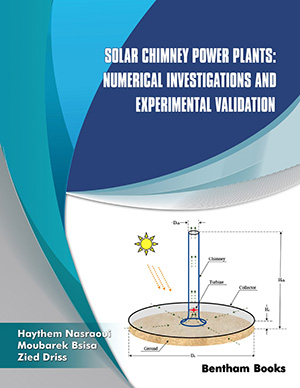Abstract
Numerous studies about the use of solar chimney for air conditioning, drying, and electrical power production were performed. The present study considered first the heat transfer process and the fluid dynamics in the collector and the chimney tower and extended later by a parametric study on the effects of the geometrical parameters. A validated CFD code was adopted to the solar chimney shape to resolve the governing equations (continuity, momentum, and energy equations). The investigation displays a necessity for a more detailed analysis of such systems, which is essential for an ample definition of the design rules. The available literature is scarce on this type of analysis, as research mostly concentrates on the evaluation of the global performance of such systems. For the design of real systems, more detailed studies of the geometrical and operational aspects are needed, involving meteorological conditions and geometric performances. This work is based on understanding the mechanisms of flow and transfer of natural convection in two-dimensional configurations using the CFD software ANSYS Fluent to find the optimal design that allows adequate thermal control and maximum energy performance. Besides, we have studied numerically the effect of the geometrical parameters, such as the chimney diameter, the chimney height, the collector diameter, the collector slope angle, and the collector height, thus to obtain the optimal parameters.

















